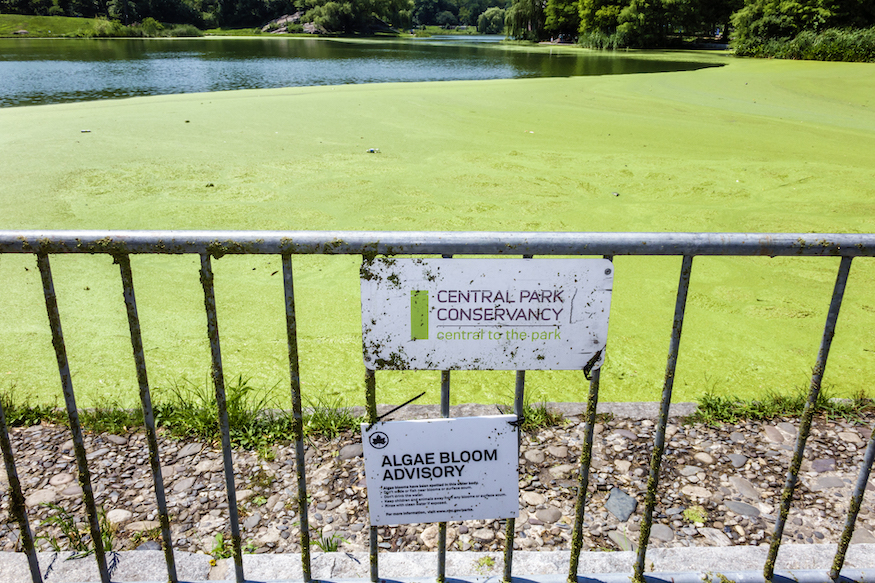Health officials are warning New Yorkers to steer clear of three city ponds after water tested positive for a toxic algae that could sicken humans and kill dogs.
The toxic green-blue algae was detected in Turtle Pond and Harlem Meer in Central Park, as well as the large pond in Prospect Park where the New York Department of Environmental Conservation discovered “dangerlously high levels of toxins,” according to NBC.
The algae made headlines when it shut down swimming at several New Jersey lakes this summer. Earlier this year, a North Carolina woman lost her three dogs after a playdate in affected water, and another pup in Georgia suffered the same fate.
The blue-green algae is known formally as Cyanobacteria. According to the Centers for Disease Control and Prevention, it naturally occurs in bodies of water, but in warmer, nutrient-rich water, the bacteria reproduces and can cause a bloom.
According to the CDC, Cyanobacteria produces toxins called cyanotoxins, which are what causes illness. The CDC also reported that there are no remedies to counteract the effects.
If a person or a pet gets ill from the Cyanobacteria, they likely would have ingested impacted waters without realizing it, or swam or did other recreational activities in water that has the Cyanobacteria.
The EPA says that humans affected can have, “allergic reactions such as skin rashes, eye irritations, respiratory symptoms, and in some cases gastroenteritis, liver and kidney failure or death.”
Some symptoms pets can suffer are: “loss of appetite, loss of energy, vomiting, stumbling and falling, foaming at the mouth, diarrhea, convulsions, excessive drooling, tremors, and seizures, or any other unexplained sickness after being in contact with water,” according to the CDC.
EPA states that symptoms can occur anywhere from 15 minutes to exposure to several days after.
If a person or pet comes in contact with affected water, they should be rinsed right away with soap and clean water. Anyone assisting in clean up should wear glove.
One challenge with Cyanobacteria is that sometimes it’s not visible above water, instead resting below the water’s surface. When visible, the blooms can range in color; sometimes they are blue, green, brown or even red.
If you can’t spot it, other telltale sings include slimy or foamy water, or mats or scum on on the water’s surface. Another warning sign is foul-smelling water.



















